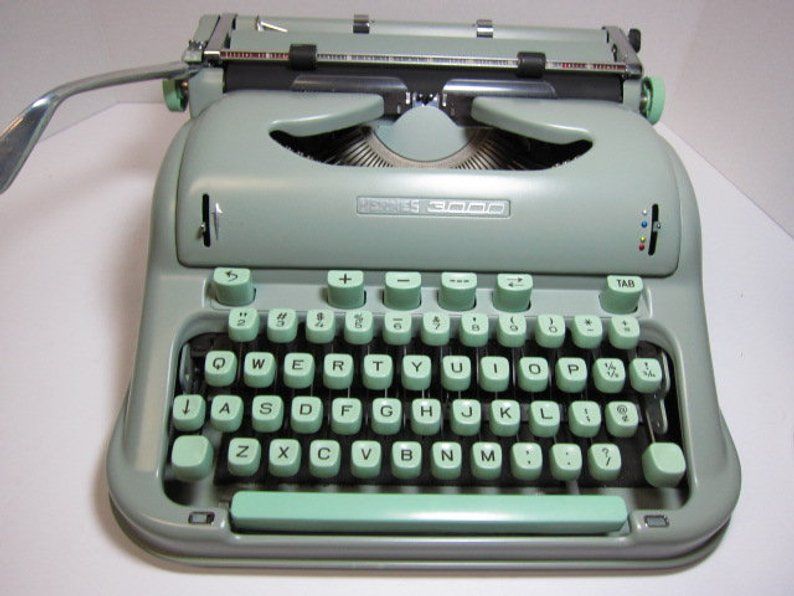Fugitive Writing Machines

The exciting news is that I have ordered a typewriter. It’s a Hermes 3000 which was manufactured in Switzerland in 1965 and is, I am reliably informed, “the Rolls Royce of typewriters”. This is a peculiar draw for me, as I’ve never had any interest in owning an actual Rolls Royce (“the Rolls Royce of cars”) but anything other than a car that is described as the “Rolls Royce of…” always gets my attention. Anyway, the good news is that I have ordered a typewriter and it shipped from America last week and I am very excited. The bad news is that, as of Wednesday, the typewriter has been “held in customs” in Coventry. I don’t even know why there is a customs facility in Coventry, let alone what my typewriter has done to attract the ire of the customs officials. I’d like to think it might be packed to the gills with smack or that i was once used as a murder weapon or something similar, but I suspect the more prosaic answer is that they are trying to figure out how much they can get away with billing me for importing a second-hand writing machine that’s half a century old.
Anyway, when (or if) the typewriter ever arrives, it will look like this:

It’s a handsome machine which I noticed when I saw Sam Shepherd using one in a documentary called CALIFORNIA TYPEWRITER, which I urge everyone reading to track down on iTunes, or however else you might find it. It’s a feature-length documentary about people who fix/collect/trade/use/make art from typewriters and it features the likes of Sam Shepherd, Tom Hanks and John Mayer.
Watching that film got me interested in the idea of the typewriter as a different way to relate to the written word. I already write a lot in longhand, which tends to be messy and freeform and replete with arrows and doodles etc and that is very much an unstructured way of getting ideas straight out of my head without much vetting. And I obviously do the lion’s share of my professional work on a computer, which makes mistakes very easy to correct. So easy, in fact, that it’s actually not always that conducive to maintaining flow because the computer is forever pointing out that you spelled something wrong and is always encouraging you to look back over what you just typed and make little edits all over it. But a typewriter is a different beast, I think; you write forwards but it’s very hard to go back. So you need to be thinking clearly, you need to know what you want to say and how you’re going to say it. And the keys physically hit the paper, which gives a sense of permanence to what you’re doing that can’t be achieved with a computer.
I don’t imagine I shall be using the typewriter for work, outside of the occasional pitch, but I think it might be interesting to use it for notes and for journaling and I harbour a notion that I might become the kind of person who types thank you notes and RSVPs.
Either that or it will become a very big, very heavy paperweight. Unless this mysterious customs house in Coventry release it, we’ll never know.
